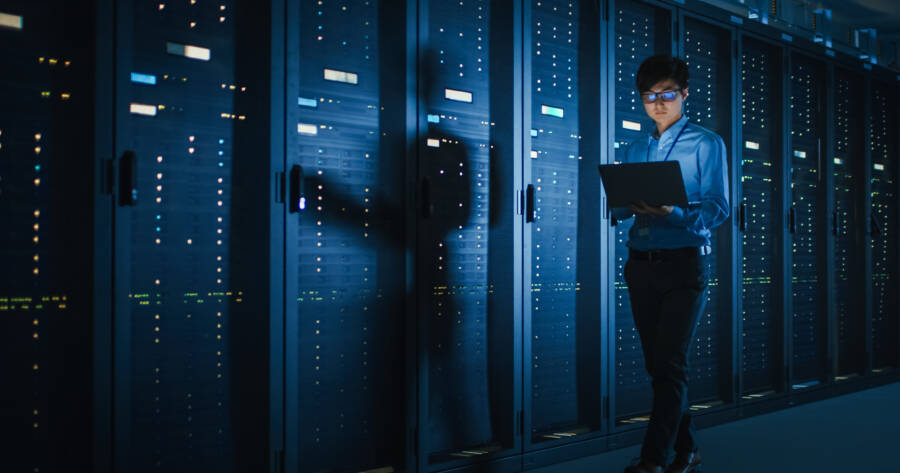Edge computing is a crucial and complex technological advancement that you may not be familiar with but plays a significant role in the digital era. Fortunately, you can learn all of the basics of edge computing with an online search.
Understanding Edge Computing
At its core, edge computing refers to data processing power at the edge of a network instead of a centralized data center. It is crucial in certain contexts to handle the massive amount of data generated daily, providing quicker response times and reducing bandwidth usage.
Edge computing solutions are frameworks or services that facilitate data processing closer to the location where it is needed. These edge computing devices are essential in various sectors, like healthcare, retail, and manufacturing, offering a wide host of benefits.
Benefits of Edge Computing
There are numerous benefits that edge computing solutions offer organizations, including the following.
- Reduced Latency: Edge computing processes data closer to where it is generated, reducing the time taken to transmit and process data, which results in lower latency.
- Improved Performance: Faster data processing and analytics lead to enhanced application and system performance.
- Bandwidth Efficiency: Processing data locally reduces the amount of data transmitted over the network, conserving bandwidth.
- Increased Privacy and Security: Localized data processing can provide more robust privacy and security controls, as sensitive data does not have to travel over the network.
- Real-Time Data Analysis: Offers the ability to analyze data in real-time, which is crucial for applications that require instant decision-making.
- Reliability: Because data can be processed locally even if the network connection is lost or slow, applications can continue to function effectively.
- Energy Efficiency: Local processing can reduce energy consumption as less data needs to be transmitted over long distances.
- Support for IoT Devices: Edge computing is crucial for the functionality and performance of Internet of Things (IoT) devices, providing them with the necessary computing resources.
- Enhanced User Experience: Users experience faster services and applications due to reduced latency and improved performance.
- Reduced Load on Centralized Data Centers: By processing data at the edge, there is less stress and workload on central data centers, leading to more efficient overall system performance.
- Improved Business Continuity: With decentralized processing, businesses can ensure continuity, as failure in one node does not affect the entire network.
- Geographical Flexibility: Edge computing allows for data processing capabilities in locations where building or expanding centralized data centers is impractical or impossible.
Platforms for Edge Computing
Selecting an appropriate edge computing provider is imperative. An edge computing platform is a system that offers both the required infrastructure and software. Key features of these platforms include data processing, storage capabilities, and connectivity options. Numerous providers offer are packages, each with distinct features catering to various needs, so it is crucial to choose one that aligns with your specific requirements and objectives.
Internet of Things Edge Computing
The intersection of edge computing and IoT (Internet of Thing) is revolutionary. IoT refers to the network of physical devices connected through the internet, and when combined with edge computing, it offers enhanced functionality and performance. This synergy is crucial in various applications, from smart homes and cities to industrial automation, making operations seamless and more intelligent.
Edge Computing vs Cloud Computing
Understanding the differences between edge computing and cloud computing is important. While both are data processing systems, they have different architectures and applications. Edge computing is lauded for its speed and efficiency as it processes data near the source. On the other hand, cloud computing involves centralized data centers, which might introduce latency in data processing. However, each has its own set of advantages and can be selected based on specific needs and scenarios.
Challenges and Concerns
Despite the numerous advantages, there are drawbacks and concerns associated with setting up and using a edge computing system. These include security concerns, integration challenges with existing systems, and the costs associated with implementation and maintenance, which can be quite high. You can learn more about the challenges of edge computing with some additional research.
Start a Search
Edge computing is a transformative technology essential in today’s fast-paced digital world. With applications ranging from quick data processing to enhancing IoT devices’ functionality, it offers numerous benefits. However, it is also imperative to understand and navigate the challenges it presents carefully.
As technology continues to advance, the significance and application of edge computing are set to increase, making it a crucial area to explore and understand. Start a search today to learn more about this technology and determine whether it’s right for your business.

